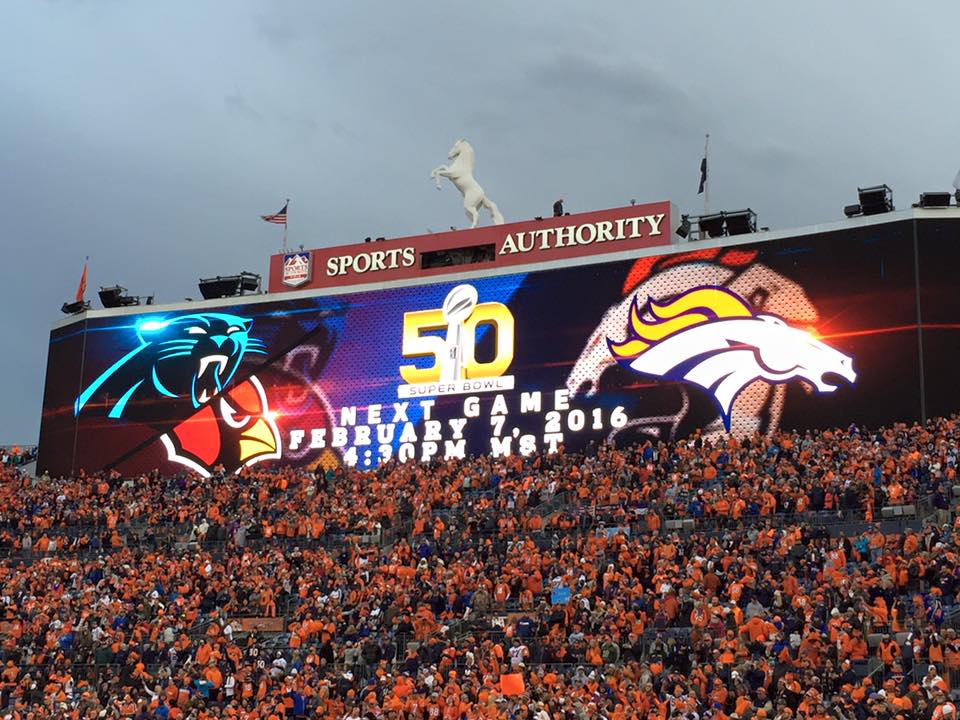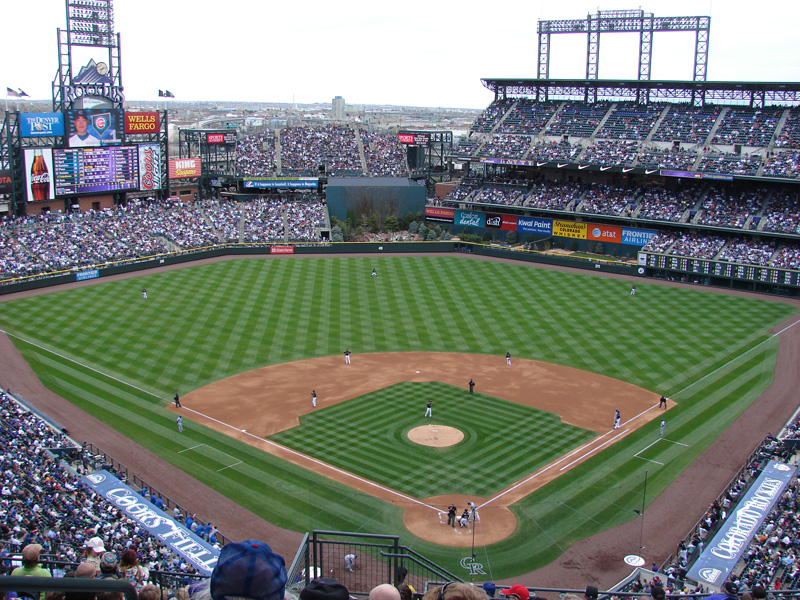
Is another usurper of the hallowed Mile High Stadium name headed down the drain?
Recently it was reported that Englewood-based Sports Authority, a 450-store national chain, skipped a $20 million interest payment on $343 million of subordinated debt maturing in 2018.
Bloomberg Business reported that it is trying to persuade creditors to reduce its outstanding debt in order to avoid filing for reorganization under Chapter 11 of the bankruptcy laws.
Sports Authority has “struggled with inconsistent operating performance” over the past four years, according to Fortune magazine, and if the missed payment triggers other defaults the chain “could become the U.S. retail sector’s first major bankruptcy of 2016.” It has been in a losing battle with its chief rival, Dick’s Sporting Goods.
But it is up to date on its annual payments to the Broncos and the Metropolitan Football Stadium District, according to district chairman Ray Baker.
The money has been paid in a lump sum every August — always on time and sometimes a little early, said Baker.
The stadium hosted its first Bronco game in 2001, the same year the district granted the original naming rights to Invesco, a Denver-based mutual funds group. In the $120 million deal, payments averaging $6 million a year are split 50-50 between the stadium district and the Broncos.
The naming-rights sale wasn’t popular with fans. They wanted to put the Mile High Stadium name on the successor facility. For several years even the Denver Post refused to use the Invesco name.
But since the fans paid for the stadium, the owners of the naming rights felt compelled to include Mile High in the name — in a weird way, such as Invesco Field at Mile High.
In 2011 Invesco decided to bail out of the deal and Sports Authority was willing to take over the naming contract under the same terms.
“My preference is to keep it going like it is,” Baker said, and hopes the company can handle the contract through its expiration in 2020.
But, he noted, “The good news is that marketing rights for stadiums in the NFL are even more expensive today than they were yesterday.”
In other words, if Sports Authority goes under or gives up its naming rights before next August, the board won’t shed too many tears before eagerly soliciting offers from others who might want to buy them. It’s most unlikely that an unmodified Mile High Stadium name is going to return anytime soon.
Sports Authority has its name and logo emblazoned on all four sides of the stadium. It merged with the Denver-based Gart Sports in 2003 but didn’t replace the Gart name on local stores until 2006.
That same year Sports Authority was purchased for $1.3 billion by a private equity firm called Leonard Green & Partners LP.
Three-quarters of the $400 million football stadium was paid for by a 0.1 percent sales tax authorized by voters in 1998. The Broncos paid the remaining quarter.
The 0.1 percent sales tax was a continuation of the 0.1 percent voters approved in August 1990 for a major league baseball stadium. That was even before Denver was awarded the Rockies franchise.
Since it’s easier for voters to approve a tax continuance instead of a new one, the Broncos seized the opportunity to keep that 0.1 percent going once the baseball stadium was paid off earlier than predicted.
Denver voters are predictably socialist when it comes to supporting professional sports. They’re happy to pay even though the prime beneficiaries are the private owners of the sports teams.
The baseball stadium district — Baker runs that too — named Coors Field without going through the usual naming-rights process. Coors paid nothing toward the construction of the stadium and pays nothing for maintenance.
What they paid for was an equity stake in the team. The way Baker tells it, the original owners of the Rockies expected the National League to demand a franchise fee of about $42 million. Instead the fee was jacked up to $92 million, and the owners needed a lot more money quickly.

Coors came through and a grateful stadium district decided to name the field after the brewery. It opened in 1995, after the team played two years in, yes, old original Mile High Stadium.
A good deal for Coors? “It’s a good deal for them but we also got baseball,” noted Baker.
Will the Rockies come back to the public for maintenance help? According to the minutes of a meeting of the baseball stadium district board last fall, a study has identified capital improvements and maintenance needs totaling $194 million over the next 30 years. Lighting and field heating are among the needs.
The Rockies — or Coors — should pay, but better keep one hand on your wallet.
Longtime Rocky Mountain News political columnist Peter Blake now writes once a week for CompleteColorado.com. Contact him at pblake0705@comcast.net You may re-publish his work at no charge and without further permission; please give full credit to Peter Blake and www.CompleteColorado.com.


